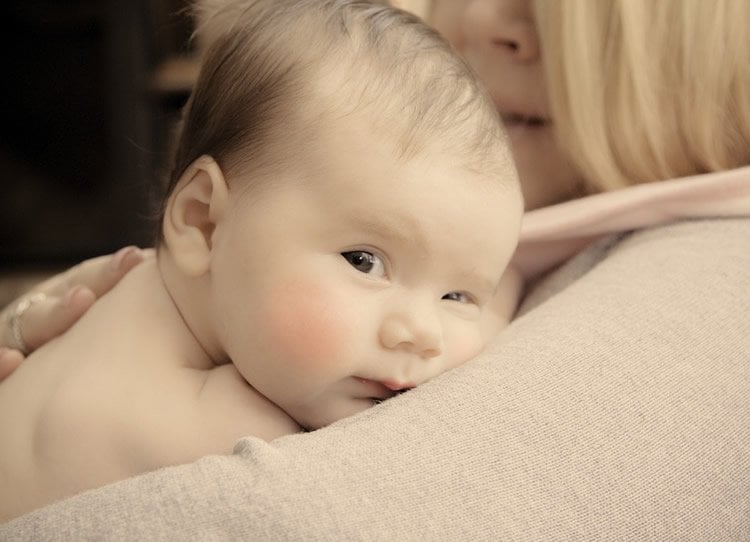UCI study shows maternal infant-rearing link to adolescent depression.
Mothers, put down your smartphones when caring for your babies! That’s the message from University of California, Irvine researchers, who have found that fragmented and chaotic maternal care can disrupt proper brain development, which can lead to emotional disorders later in life.
While the study was conducted with rodents, its findings imply that when mothers are nurturing their infants, numerous everyday interruptions – even those as seemingly harmless as phone calls and text messages – can have a long-lasting impact.
Dr. Tallie Z. Baram and her colleagues at UCI’s Conte Center on Brain Programming in Adolescent Vulnerabilities show that consistent rhythms and patterns of maternal care seem to be crucially important for the developing brain, which needs predictable and continuous stimuli to ensure the growth of robust neuron networks. Study results appear today in Translational Psychiatry.
The UCI researchers discovered that erratic maternal care of infants can increase the likelihood of risky behaviors, drug seeking and depression in adolescence and adult life. Because cellphones have become so ubiquitous and users have become so accustomed to frequently checking and utilizing them, the findings of this study are highly relevant to today’s mothers and babies … and tomorrow’s adolescents and adults.
“It is known that vulnerability to emotional disorders, such as depression, derives from interactions between our genes and the environment, especially during sensitive developmental periods,” said Baram, the Danette “Dee Dee” Shepard Chair in Neurological Studies.
“Our work builds on many studies showing that maternal care is important for future emotional health. Importantly, it shows that it is not how much maternal care that influences adolescent behavior but the avoidance of fragmented and unpredictable care that is crucial. We might wish to turn off the mobile phone when caring for baby and be predictable and consistent.”
The UCI team – which included Hal Stern, the Ted & Janice Smith Family Foundation Dean of Information & Computer Sciences – studied the emotional outcomes of adolescent rats reared in either calm or chaotic environments and used mathematical approaches to analyze the mothers’ nurturing behaviors.
Despite the fact that quantity and typical qualities of maternal care were indistinguishable in the two environments, the patterns and rhythms of care differed drastically, which strongly influenced how the rodent pups developed. Specifically, in one environment, the mothers displayed “chopped up” and unpredictable behaviors.
During adolescence, their offspring exhibited little interest in sweet foods or peer play, two independent measures of the ability to experience pleasure. Known as anhedonia, the inability to feel happy is often a harbinger of later depression. In humans, it may also drive adolescents to seek pleasure from more extreme stimulation, such as risky driving, alcohol or drugs.

Why might disjointed maternal care generate this problem with the pleasure system? Baram said that the brain’s dopamine-receptor pleasure circuits are not mature in newborns and infants and that these circuits are stimulated by predictable sequences of events, which seem to be critical for their maturation. If infants are not sufficiently exposed to such reliable patterns, their pleasure systems do not mature properly, provoking anhedonia.
With her UCI team, Baram is currently studying human mothers and their infants. Video analysis of care, sophisticated imaging technology to measure brain development, and psychological and cognitive testing are being employed to more fully understand this issue. The goal is to see whether what was discovered in rodents applies to people. If so, then strategies to limit chopped-up and unpredictable patterns of maternal care might prove helpful in preventing emotional problems in teenagers.
Source: University of California, Irvine
Image Credit: The image is in the public domain
Original Research: Full open access research for “Fragmentation and high entropy of neonatal experience predict adolescent emotional outcome” by J Molet, K Heins, X Zhuo, Y T Mei, L Regev, T Z Baram and H Stern in Translational Psychiatry. Published online January 5 2016 doi:10.1038/tp.2015.200
Abstract
Fragmentation and high entropy of neonatal experience predict adolescent emotional outcome
Vulnerability to emotional disorders including depression derives from interactions between genes and environment, especially during sensitive developmental periods. Across evolution, maternal care is a key source of environmental sensory signals to the developing brain, and a vast body of work has linked quantitative and qualitative aspects of maternal care to emotional outcome in children and animals. However, the fundamental properties of maternal signals, that promote advantageous vs pathological outcomes in the offspring, are unknown and have been a topic of intense study. We studied emotional outcomes of adolescent rats reared under routine or impoverished environments, and used mathematical approaches to analyze the nurturing behaviors of the dams. Unexpectedly, whereas the quantity and typical qualities of maternal care behaviors were indistinguishable in the two environments, their patterns and rhythms differed drastically and influenced emotional outcomes. Specifically, unpredictable, fragmented maternal care patterns translated into high-entropy rates of sensory signals to the offspring in the impoverished cages. During adolescence, these offspring had significant reductions in sucrose preference and in peer-play, two independent measures of the ability to experience pleasure. This adolescent anhedonia, often a harbinger of later depression, was not accompanied by measures of anxiety or helplessness. Dopaminergic pleasure circuits underlying anhedonia are engaged by predictable sequences of events, and predictable sensory signals during neonatal periods may be critical for their maturation. Conversely, unpredictability maternal-derived signals may disrupt these developmental processes, provoking anhedonia. In sum, high-entropy and fragmented patterns of maternal-derived sensory input to the developing brain predicts, and might promote, the development of anhedonia in rodents, with potential clinical implications.
“Fragmentation and high entropy of neonatal experience predict adolescent emotional outcome” by J Molet, K Heins, X Zhuo, Y T Mei, L Regev, T Z Baram and H Stern in Translational Psychiatry. Published online January 5 2016 doi:10.1038/tp.2015.200






